Contents
Apricot Aquarius is a variety that is deservedly popular in central Our Country due to its good characteristics and excellent fruit taste. Compliance with the rules of planting and competent care of the plant will help the gardener to regularly collect high yields without much hassle.
History of breeding
The apricot variety Aquarius was bred and first described in the Main Botanical Garden of Our Country in 1996. The authorship of the variety belongs to L.A. Kramarenko, who received Aquarius from Lel apricot seeds through free pollination.

An entry about Aquarius in the State Register as an independent variety was made in 2004.
Description of the culture
The description and photo of the Aquarius apricot give an idea of it as a powerful, tall (5-6 m) tree with a dense, raised, moderately spreading crown. Annual shoots are smooth-skinned and straight, slightly branched.
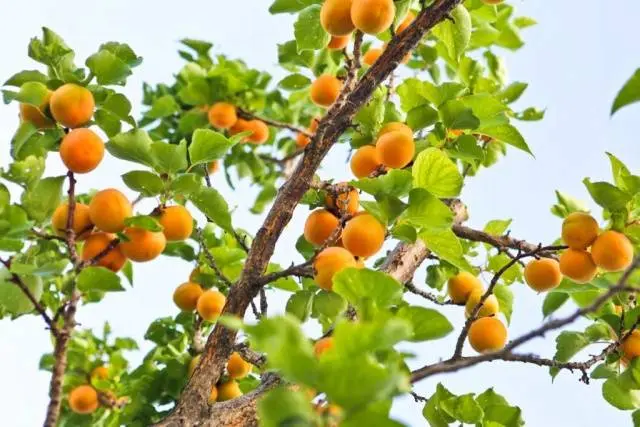
The leaves of Aquarius are dark green, large, with a jagged edge and a slightly rough surface. Their ends are pointed.
Aquarius apricot flowers are relatively small (2,5–2,8 cm), white, tightly seated on the shoots. Consists of 5 petals.
The fruits are round, large, the longitudinal seam is clearly visible on the side. The skin is yellow-orange in color with a barely noticeable blush, slightly pubescent. The size of the stone is small (its weight is 8,5% of the weight of the fruit), it can be easily separated from the pulp. The pulp is tender, orange, moderate density, very juicy. The pleasant sweet and sour taste of Aquarius apricot is highly appreciated by tasters – according to various sources, it received from 4,5 to a maximum of 5 points.
This variety is officially zoned in the Central region, but it is cultivated almost everywhere in the middle zone of the country. In particular, the cultivation of the Aquarius apricot in the Moscow region has proven itself well.
Features
In order to grow an Aquarius apricot in a personal plot, one should take into account the characteristic features inherent in this variety.
Drought resistance, winter resistance
The winter hardiness of the Aquarius apricot is high, like that of most representatives of the northern varietal group of this crop. It is able to withstand frosts down to -35 degrees.
Good resistance to drought was transferred from the parent variety Lel to Aquarius.
Pollination, flowering period and ripening period
Flowers on the branches of the Aquarius apricot, exuding a delicate honey aroma, appear in abundance before the vegetative buds open.
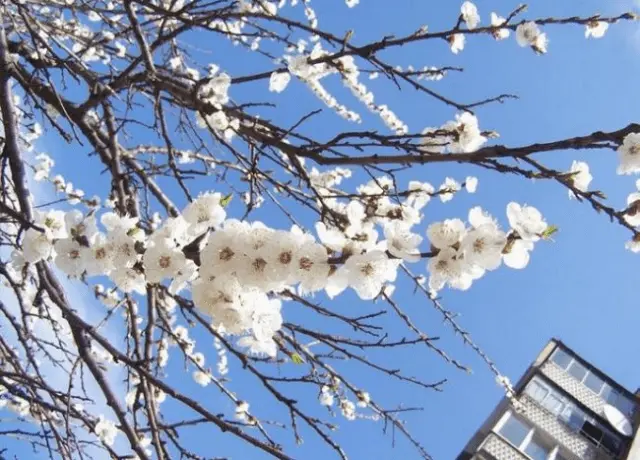
Fruit ripening occurs in medium terms and begins around mid-August.
Gardeners who want to know if a self-fertile apricot is Aquarius or not can be confidently answered in the affirmative. Pollinators are optional for him – it is quite possible to get by with only one tree if, for example, the garden is not large enough.
yield, fruiting
Aquarius is one of the high-yielding varieties of apricots, since on average it is able to produce 133 kg / ha per season. If the plant is young, it is possible to collect 10–15 kg of fruits from it, while the yield of an adult tree reaches 25–30 kg.
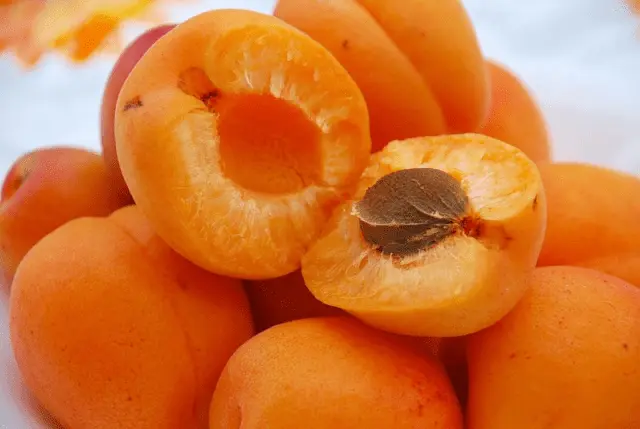
Aquarius bears fruit regularly, every year, starting from 3-4 years of age.
According to reviews of the Aquarius apricot in the Moscow region, with proper care, it is able to maintain yields up to 18–20 years.
The fruits of this apricot variety contain:
- 14,2% solids;
- 7,6% sugar;
- 2,7% acid.
Scope of fruits
Transportation of Aquarius apricot fruits is difficult due to the fact that they are poorly stored. However, due to their excellent taste, their purpose is universal.
Aquarius fruits are very tasty freshly picked, they can also be frozen and dried. Jams, compotes and desserts made from them are excellent.
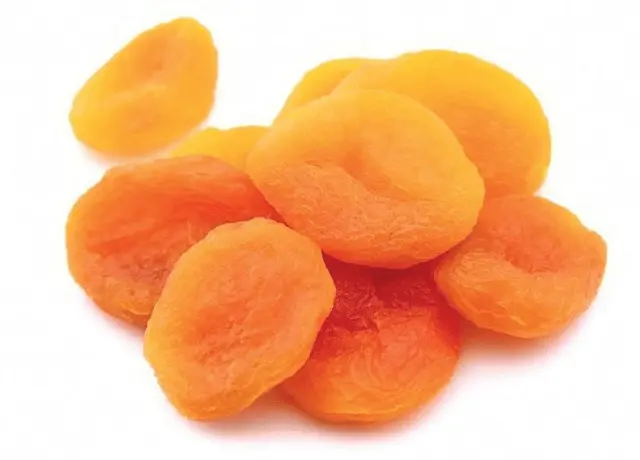
Disease and pest resistance
The resistance to the most common diseases and pests of stone fruit trees in the Aquarius apricot was found to be satisfactory.
This variety has an average resistance to perforated spotting (clasterosporiosis).
As for pests, it is known that Aquarius apricot almost does not affect aphids.
Advantages and disadvantages
A brief description of the Aquarius apricot variety can be presented as follows:
| Advantages | Disadvantages |
| Winter hardiness | tall tree |
| Stable, high yields | Poor transportability of fruits |
| Great fruit flavor | |
| Self-fertility | |
| Resistance to clasterosporia and aphids |
Features of landing
Planting an apricot Aquarius has some features that a gardener should know.
Recommended dates
Planting young apricot trees in the ground is advised:
- in early spring, when the snow melts;
- autumn (September or October).
Choosing the right place
The key to success in growing apricot Aquarius will be the right landing site:
- a well-lit area of the garden, protected from cold winds;
- light in composition and well-drained soil;
- soil reaction – neutral or slightly alkaline;
- groundwater should not lie too close to the surface.

What crops can and cannot be planted next to an apricot
It is generally accepted that apricot, including Aquarius, is an “individualist”. It is advised to plant it in such a way that there is a distance of at least 10 m between it and plantings of other fruit crops or shrubs.
However, there are exceptions with which the Aquarius apricot is able to get along peacefully. Among them:
- some stone fruits (cherry plum, blackthorn, dogwood);
- umbrella vegetables and herbs (carrots, dill);
- thyme, lavender;
- apricot trees of other varieties that can be useful as pollinators.
Selection and preparation of planting material
For planting on a personal plot, it is advised to purchase annual apricot seedlings Aquarius at autumn fairs or in nurseries.
Signs of a quality apricot seedling:
- healthy trunk;
- even branches not damaged by pests;
- powerful, developed root system with straight, whitish root tips.
Landing algorithm
Planting apricot Aquarius on the site is done as follows:
- a planting hole (approximately 0,7 by 0,8 m in size) is usually dug out in the fall;
- drainage is laid at the bottom of the pit, a mixture of soil, peat and sand is poured over it, and left until spring;
- in the spring, a part of the soil is selected from the pit, water is poured into the resulting recess and the seedling is carefully placed in the center;
- having straightened the roots of the plant, the landing site is filled with soil mixture;
- compact the soil in the trunk circle, water it and mulch it.
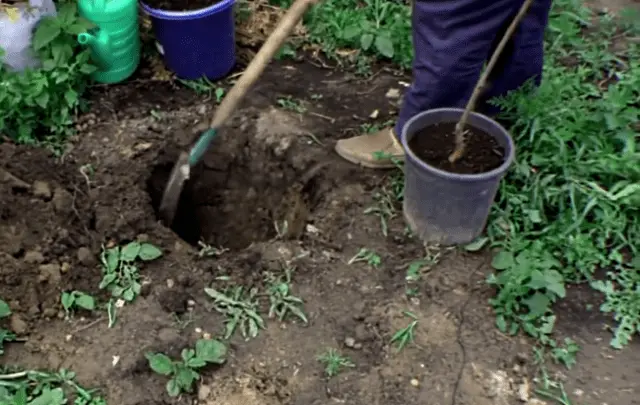
The secrets of proper planting and caring for apricots in the backyard will be revealed by the video:
Culture aftercare
Apricot pruning Aquarius is held annually either in March or at the end of October – November.
You need to cut:
- diseased and old branches;
- shoots thickening the crown;
- too long shoots (shorten).
Places of cuts need to be covered with garden pitch or oil paint with a natural base.
After planting, the Aquarius apricot is regularly watered until the beginning of August, making sure that the near-stem circle does not dry out. Then watering is stopped to give the plant the opportunity to prepare for winter.
In the future, it is advised to water the tree in spring and in the first half of summer, making sure that the amount of water is not excessive.
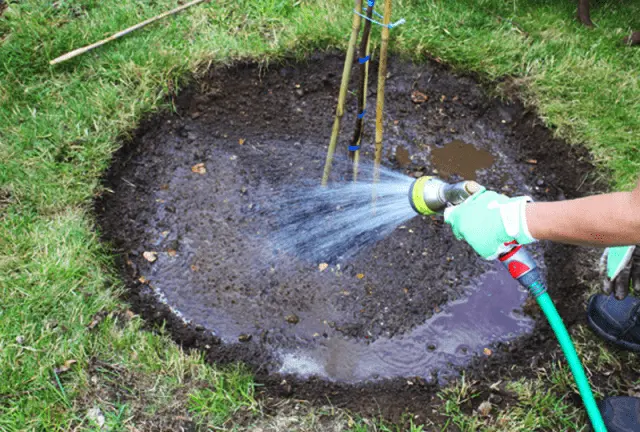
Caring for the Aquarius apricot tree also includes fertilizing with fertilizers.
The general rules for top dressing are as follows:
- in autumn – organic (mullein, compost);
- in summer – phosphorus;
- in early spring – mineral (nitrogen-containing).

Preparing apricot Aquarius for the winter period, at the end of October – November follows:
- collect foliage that has fallen after leaf fall and destroy it (burn or bury);
- whitewash the trunk, skeletal branches and, if possible, the bark of the shoots of the tree with garden whitewash to protect against frost and prevent sunburn in early spring;
- protecting the trunk from rodents (hares), you can wrap it with coniferous spruce branches (needles down) or artificial material that passes air well.
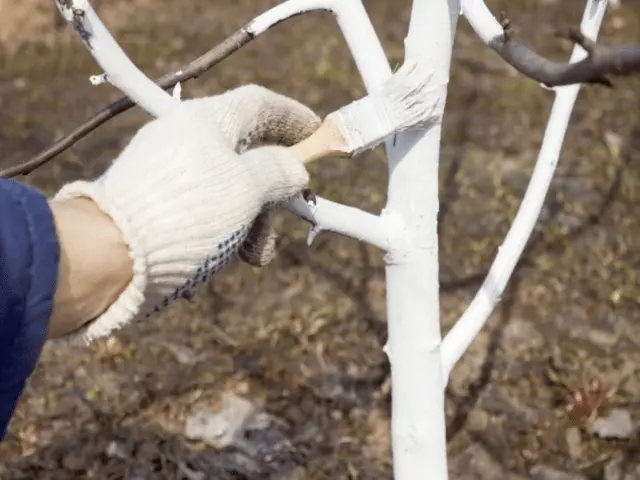
Diseases and pests, methods of control and prevention
When caring for an Aquarius apricot, you should be able to distinguish between the most common diseases and know how to deal with them:
| Disease | Manifestations | Prevention and treatment measures |
| destroyed | Spots of brown or greenish plaque on the leaves, drying of foliage, damage to flowers and fruits | Timely pruning and weed control. Processing with Bordeaux mixture |
| Moniliasis | Drying of flowers and the upper part of the shoots, resembling “burns”, rotting of fruits on the branches | Prevention – competent tree care. Treatment – spraying with an aqueous solution of copper oxychloride, “Strobi”, “Topsina-M”, “Topaz” with the addition of soap |
| Klyasterosporiosis | Brown spots on the leaves, in places where holes are further formed |
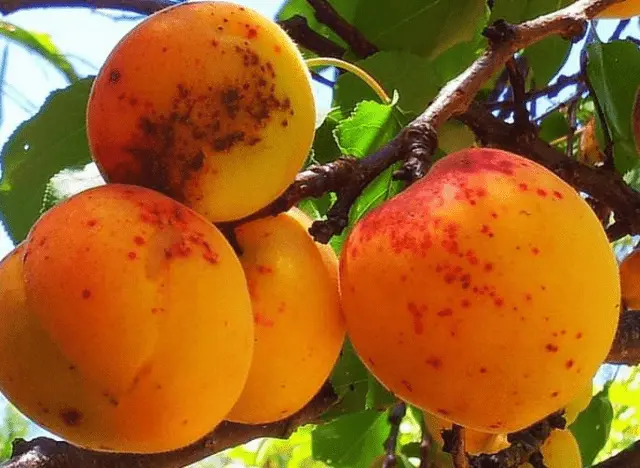
Knowledge of pest control measures will also help the agrarian:
| Pest | Appearance and activity | Prevention and control measures |
| Plodojorka | A small brown butterfly, the caterpillars of which, penetrating the fruits, feed on their pulp | Spraying with “Metaphos”, “Sonnet”, “Bancol” |
| Weevil | A small beetle with a shiny green-purple back. The affected ovary of the fetus turns black and fades. Damaged (“gnawed”) leaves and fruits | Spraying “Metaphos”, “Decis”, “Intravir” |
Conclusion
Apricot Aquarius is a winter-hardy, self-fertile, high-yielding variety of universal purpose with excellent taste. Its disadvantages include the high growth of the tree and the poor preservation of fresh fruits. However, the positive qualities undoubtedly prevail – accordingly, reviews of the Aquarius apricot among gardeners in central Our Country are mostly good.









